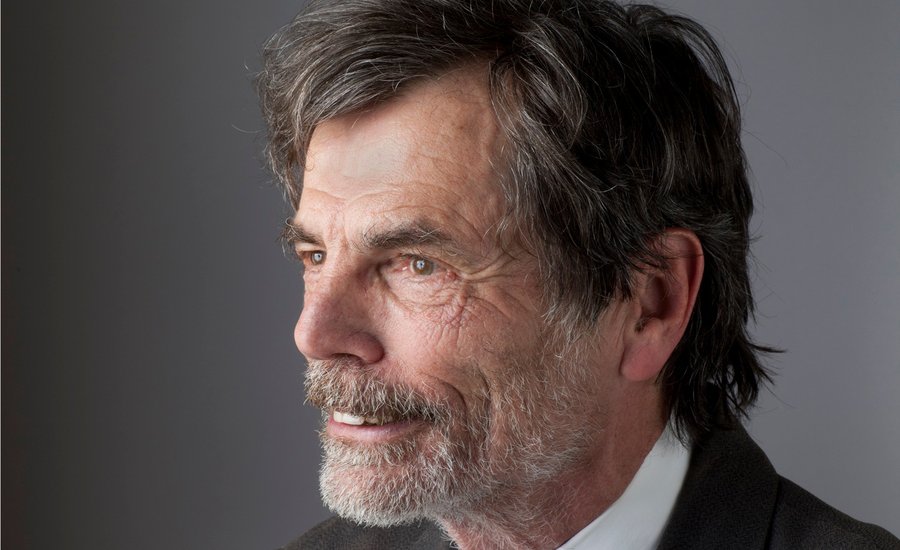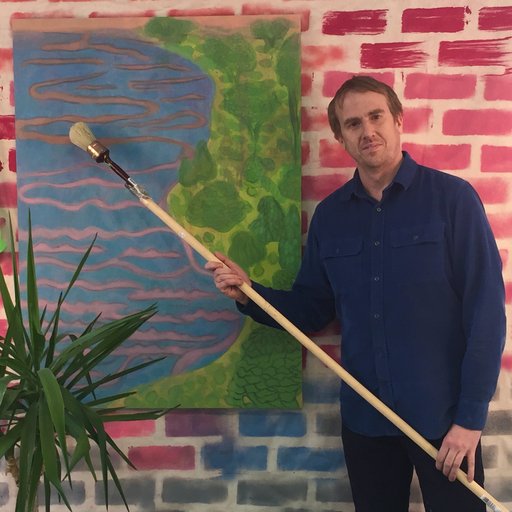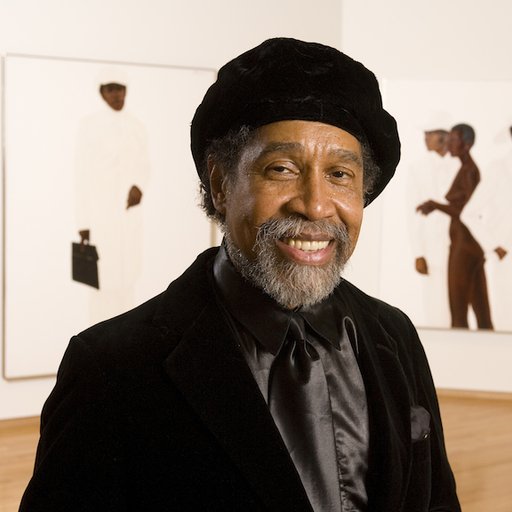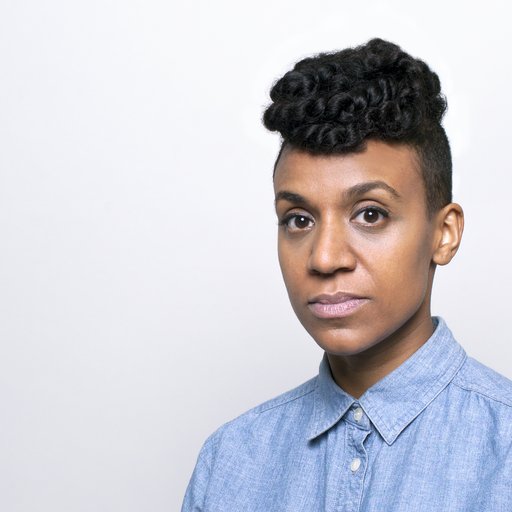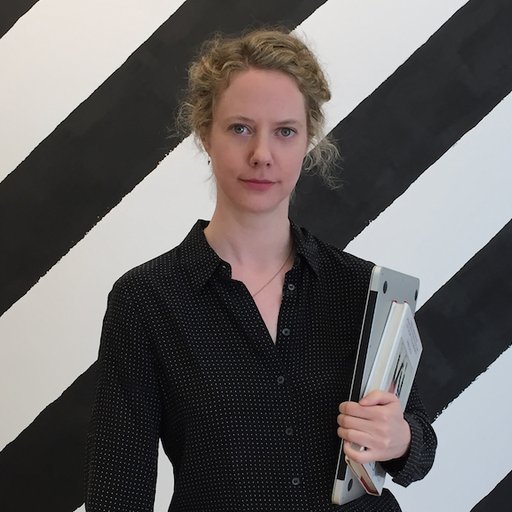The American artist Richard Tuttlehas come a long way since his first show at the Betty Parsons Gallery in 1965, held while he was still working as her assistant at the tender age of 24. His often miniscule Postminimalist constructions in fabric, wire, wood, and other unassuming materials have provoked dramatic reactions from observers and critics ever since, culminating in an infamous 1975 survey show at the Whitney that cost curator Marcia Tucker her job (thereby spurring her to create the institution we now call the New Museum).
Some 40 years later, Tuttle has established his place in art history and is reaping some of the rewards. He currently has an exhibition of new textile assemblages (a recurring material in his work) at the Met through June 26, and is in the process of gearing up for a retrospective show of his work from the past 50 years at Pace, on view May 6 to June 11. Meanwhile, subtle and seemingly ad-hoc sculptures inspired by his work have become so fully subsumed into the work of much younger artists as to become almost cliché, a clear sign of his enduring impact on contemporary art.
These are of course welcome developments for Tuttle, but they are not what he considers to be his biggest achievement. As a proud member of what could be called the avant-garde (in its 1960s and ‘70s American permutation), Tuttle says he wants to make art “as available to people as life itself,” a goal he explicitly connects to the democratic promise of the American Dream. This blurring of the lines is nothing less than a spiritual quest to fight against the suffering inherent to everyday life, and Tuttle is quite serious about the role he has to play in elevating the consciousness of society.
In this conversation with Artspace’sDylan Kerr (conducted in the immaculate garden of his Manhattan townhouse), the veteran artist tells us why art for everyone might be the last best hope for humanity.
Your upcoming show at Pace is called “26,” after the number of solo shows you’ve had in New York up to this point, with one work from each show selected for this new exhibition. In gathering these pieces together and distilling your diverse career for this show, what do you see as a connecting line between the 26 works you’re featuring?
Every artist has certain attributes. They’re wonderful because you don’t ask for them—they’re yours, like fingerprints or something. One of my attributes is a certain kind of line. It isn’t a straight or singular line—it’s almost a line of energetics. It’s interesting to me because it’s not available to me all the time—I can’t just do it. It also combines with my ongoing development, because it has to be reinvented with each body of work that comes along.
That’s a level of analysis that’s maybe more suited for the practitioner, because I think the show is really for young artists. I do believe there is a thread, and if someone were to believe that and try to locate it and then stayed on that thread through hell and high water, there’s a chance they could learn something. There are so many examples of creativity in youth, but not so many instances of somebody who has kept applying themselves to the creative for a lifetime. I particularly admire the artists whose best work comes at the end.
I think some people will find my practice ridiculous because I don’t use assistants. I’m not into this major studio practice and so on, because I want to shine light on the creative dimension that everybody has. I think everybody’s born of two parents, but you have this creative dimension—a singularity that you can explain to yourself. You can work in a way where you show a value and create a value simultaneously, and with that you can create yourself.
 Systems, I, 2010
Systems, I, 2010
What do you think is the most salient change you’ve witnessed in the art world since your first solo show in 1965?
I think what we’re experiencing now is a big, big shift in the way we think about the world. When I was your age, the experiential was dominant. You’d feel that other really cool people were having an experience that was far more interesting or unusual or deeper than yours.
In today’s world, it’s about the image. The cool people are the ones who can process images or throw them back and forth faster and better and more and so on than you can. Each one has its drawbacks, its weaknesses. It doesn’t really matter—either way you feel like a shit.
It seems that in our world today nothing is impressive. How many images are there? You’re an image, I’m an image—who cares? There’s no differentiation. I mean, you’re 24, I’m 74. That’s 50 years difference, but if we’re both images, it’s “so what?” You can’t get rid of experience just because the world changes. The world is going to change again, but when it changed from experiential to image, it was [snaps his fingers] instant.
Roughly when did that change occur?
1975. I had my show at the Whitney in 1975—“controversial” isn’t even the word, but all my shows at that time were controversial. Everyone said, “This is the return of the ‘20s, of avant-garde art, of throwing eggs at sculpture and all that.” It wasn’t. I mean, I knew it wasn’t, but I didn’t know what it was.
My work has always tended to make people say stupid things, unfortunately. I try to steer them away, but you get really intelligent people who would say things like “less has never been less” [New YorkTimes critic Hilton Kramer’s famous description of Tuttle’s aforementioned 1975 show at the Whitney].
It’s a life-experience thing—some people are for you and some people are not, but there’s no sign on their face to tell the difference. And so, I couldn’t even take a train ride because the person next to me could have been one of the ones who was against me. I had to ride in between the cars where there wouldn’t be anybody else in the middle of the winter with the snow coming in.
Is that something that you actually did?
Absolutely.
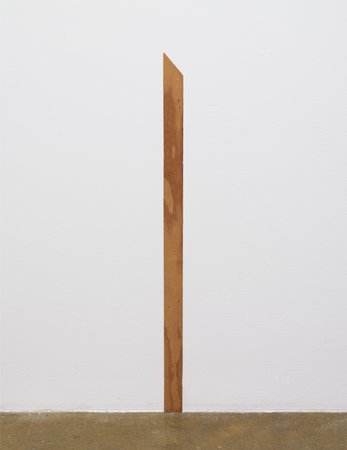 8th Wood Slat, 1974
8th Wood Slat, 1974
How did these negative reactions manifest?
For example, the show in Amsterdam ["Richard Tuttle: Title 1-6, Title I-IV, Title A-N, Title 11-16, Titre 1-8, Titolo 1-8," held in Stedelijk Museum in 1978] was utterly shocking. I went to the director and said—I remember my words precisely—“Everything is turning into art too fast. I want to make a show in this museum of something that hasn’t turned into art yet.”
To illustrate that, I said, “You’re walking in the woods, and it’s fall, and you look down and see a beautiful yellow leaf that’s just sitting on the ground there, and you just are knocked out. And then there’s that moment where you say ‘Oh, that’s a maple leaf.’ And your experience is over. It’s finished. I want to make a show that’s before you say it’s a maple leaf.” And he was like, “Do it.”
I did it, and the museum had this visitor book right at the front of the stairs, and they invite comments, and that book was in shreds by the end of this show. People had never seen that kind of language written down. The Dutch are known to be liberal and open, but they wrote things like, “Fucking Yankee. We don’t need your shit in our country.” And curators wanted nothing to do with this show. They’d get punched out in bars because you’re just associated with that terrible show. It felt like I was being crucified.
For me, I felt I was offering the truth because I’ve seen how galleries manipulate artists or they put a spin on stuff, so you can’t see what’s real art and what’s the spin at times. I was just offering to make a show before anything got laid on top of it—just the real. Looking at that now, it was part of that period where the people were offered experience or image. They wanted image.
Why do you think your works—which may have been strange and seemingly simple, but not really threatening—provoked such strong reactions at that time?
It was another world shift. One of the major issues of the last 250 years has been the relation of space and time. That time was so exciting because I felt that, following the Second World War, the subject of artworks could be more than apples or pears or trees. It could be anything, and that’s an enormous and exciting thing if you get it—but a lot of people still don’t.
Anyway, what happened in art was that a point in space—all the characteristics of space—turned into a point in time, and through creative work, you could not only record that but treat it as a subject. It was the most phenomenal subject art had ever even come close to. The works became these little things like that that could sustain a 50-foot wall, and you just had to have eyes to see and enough people to see, to corroborate.
 Second Green Octagonal, 1967
Second Green Octagonal, 1967
How important is it to have other people, as you say, “corroborate” your work?
I think, and I’m learning as I go, that creativity does not come from the artist—that’s the mythology. It comes from society, and society has this major problem of how to change grief or sadness into joy. You can’t live burdened by grief or suffering, and humans are no different than other things. My dog will go along and find something that stops him, that’s not to his liking, and he just goes on his back and his legs shake all over, and when the legs come down, he goes on ahead. He’s found this way to convert the obstacle into something invisible.
Part of the American Dream is that we can create a society, a nation, that has a higher consciousness. Part of that is that you can talk to other people if you have a developed consciousness. If you don’t have a developed consciousness, you have no conversation—it really hurts communication.
We’re all born into some narrow experience, within limits, but art is the kind of thing that can take us outside of ourselves, free us from those limits, and develop that consciousness. If you can get free, then you can love yourself. One of the ingredients of human suffering is people who can’t get free of themselves—that’s high on the list. If art can free you from your suffering, it has a job to do.
Is that the main function of art, in your mind?
Well, I’m the artist. I’m from nature, like that cloud up there, just floating around with nothing to do. It’s society that doesn’t know how to free themselves. They don’t know how to change their grief, they don’t know how to handle their suffering, and they look at me and say, “Oh, maybe you can help us.” Well, I’d like a job, so that’s what I try to do.
Unfortunately, a lot of the way this story is told is basically, “I want to be an artist, I want to be rich and famous.” It’s not about getting! It’s about giving absolutely everything away. And society knows that, eventually. What’s that phrase—you can fool some of the people some of the time, but not all the people all the time. You know, there are galleries and people that want to manipulate things, but unless art does the job of freeing the society from the suffering, it won’t last.
There are other things that free people from their suffering. There’s religion, there’s love, and so art does not have an exclusive hold on that. There is a spirituality in art which is not at all like the spirituality of religion. The spirituality of art doesn’t have any burdens like religion. The Rothko Chapel and crap like that kill me. I’m sure people want to blend the spirituality of art and the spirituality of religion, but what do you get from that? Exactly nothing, in my opinion.
A lot of times, when one is offered art, the normal response is, “Oh, I don’t need art. I’m fine. Everything’s ok.” People say things like “my kid can do that.” Fine. One thing that art teaches you is that there’s space for everything. You don’t have to get in there and start saying this is ok and that’s not.
 Five, 1987
Five, 1987
You mentioned earlier that you “want to shine light on the creative dimension that everybody has.” What I find interesting about your work is that it often employs very commonplace materials arranged in relatively simple formats—it does look like something someone who hasn’t been trained as an artist could make. Is that “my kid can do that” comment a challenge to or an affirmation of what you’re doing?
I’m a good American—I make my work for everybody. It’s not for some elite, inside crowd. Whether it takes them 40 years or 70 years to get it, it’s still for everyone. And I think someday, no matter what, it will be accessible to everyone. Call that a belief structure, call it whatever you like, but that’s how I go ahead.
My generation and I dreamed of this project where art is something that’s as available to people as life itself, not something that gets stuffed in some basement. It’s a huge ambition, and maybe it’s not even possible. There has been a lot of nuttiness coming out from that, but the fact is, we had to be our own art historians, our own critics, our own apologists, our own social scientists along with making our work. Now I’m old. I don’t have time for that stuff anymore. I really want to get to my work. That’s always a characteristic of art that spans these polarities—how you get it out from the studio and into the street? How do you get it out effectively?
I was just at a symposium at Notre Dame University, and one of these academic people had the arrogance to think that his work was to get into an artist’s head and explain that to the world in order to help art, which is one of the most incredible things I’ve ever experienced. When I called him on that, saying artists shouldn’t be treated like that, he said, “What do you mean? Some of my best friends are artists.”
There are many arrogant intellectuals who think they know what art is, but they’re actually just jealous of art. They want to be artists themselves. They will bite the very hand that’s feeding them. I’m asking those very people to see how important their work could be in society by using their same resources and sources and energies and so on to build a methodology out of art, not science, and to get art to be as available as life is.
The unavailability of art is why I’m doing this interview—I want people to know about this. That’s the name of the game. If it’s Richard Tuttle’s art, fine—I go as far as I can to make it, as it were, everybody’s art, because that’s what this project is directing me to do. I didn’t make this world, but I have to live in it, so I’m doing the best I can.











